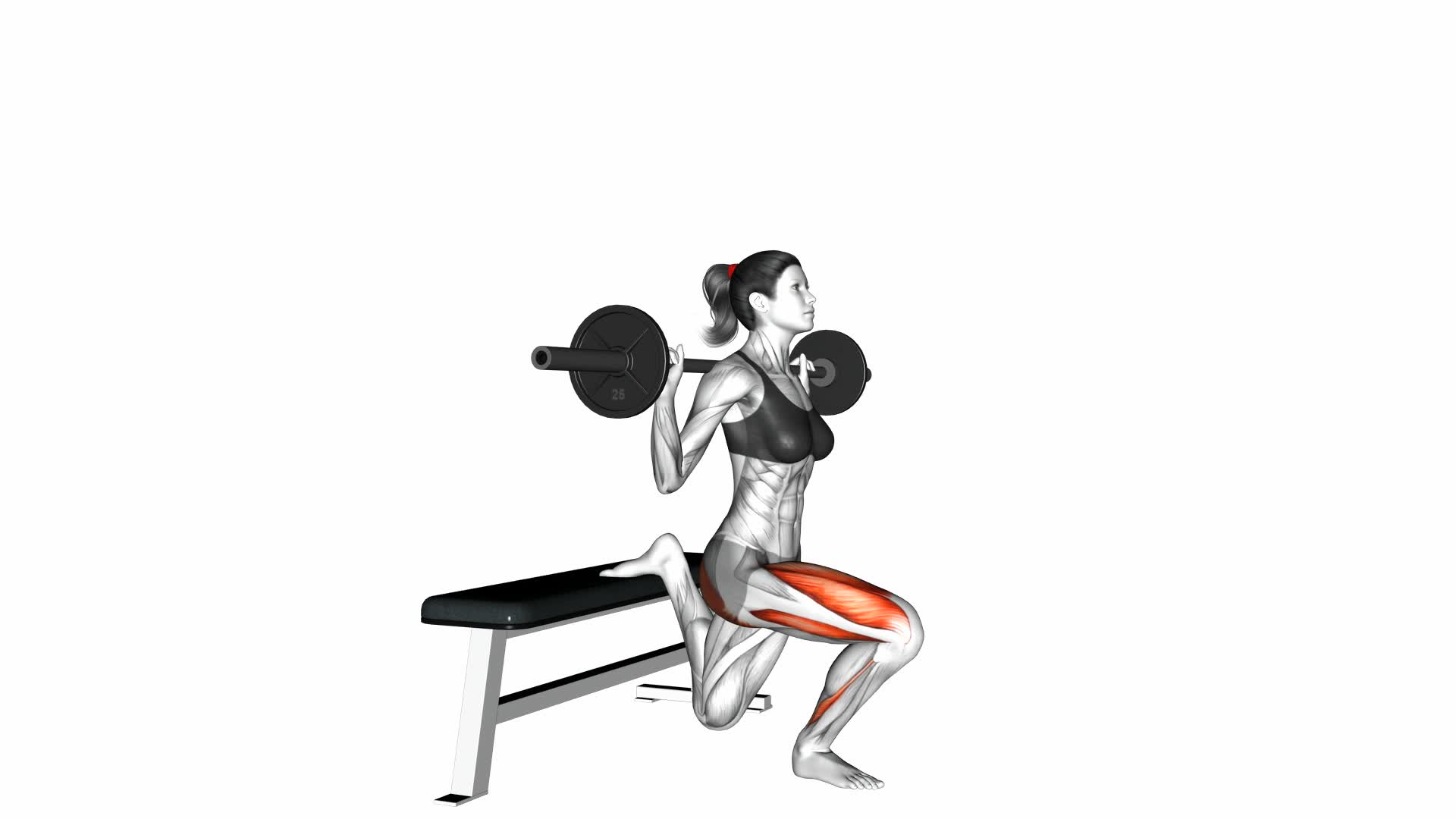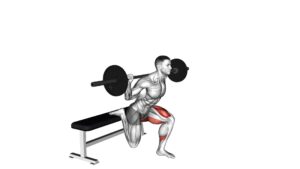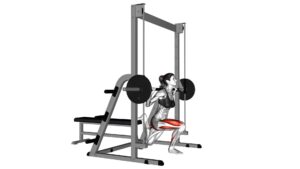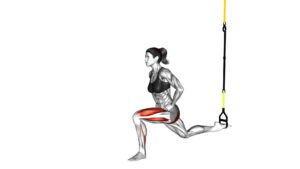Barbell Single Leg Split Squat (female) – Video Exercise Guide & Tips

Are you looking to strengthen your lower body and improve your balance?
Watch This Exercise Video
The Barbell Single Leg Split Squat is the perfect exercise for you.
This video exercise guide will show you the proper form and technique, as well as provide tips for maximizing your results and avoiding injury.
With variations and progressions available, you can easily increase the difficulty level as you progress.
Get ready to incorporate this effective exercise into your workout routine.
Key Takeaways
- The Barbell Single Leg Split Squat is an effective exercise for improving lower body strength and stability.
- It activates multiple leg muscles, including quadriceps, hamstrings, and glutes.
- Adding resistance with a barbell stimulates muscle growth.
- The exercise enhances balance and coordination while also addressing muscle imbalances by working each leg independently.
Benefits of the Barbell Single Leg Split Squat
One major benefit of incorporating the barbell single leg split squat into your workout routine is that it can help improve your lower body strength and stability. This exercise activates multiple muscles in your legs, including your quadriceps, hamstrings, and glutes. By using a barbell, you can add resistance to the movement, increasing the challenge and stimulating muscle growth.
In addition to muscle activation, the barbell single leg split squat also improves balance and stability. Balancing on one leg while performing the squat requires coordination and control, which in turn strengthens the muscles responsible for stability. This exercise can help address any muscle imbalances you may have, as it requires each leg to work independently.
By regularly incorporating the barbell single leg split squat into your workout routine, you can expect to see improvements in your lower body strength, stability, and overall balance. This exercise not only targets key muscle groups but also challenges your coordination and control.
Remember to start with a weight that's appropriate for your fitness level and gradually increase the resistance as you become stronger.
Proper Form and Technique for the Exercise
To perform the barbell single leg split squat with proper form and technique, you need to maintain balance and stability while engaging your leg muscles. This exercise targets your quads, hamstrings, and glutes, helping to improve lower body strength and stability.
To begin, place a barbell across your upper back, resting it on your traps. Stand with your feet hip-width apart and take a big step forward with one foot. Lower your body down by bending both knees, ensuring that your front knee stays directly above your ankle and your back knee hovers just above the ground. Keep your torso upright and avoid leaning forward. Push through your front foot to return to the starting position.
When performing the barbell single leg split squat, it's important to avoid common mistakes. One common mistake is allowing the front knee to cave inwards or go past the toes. To prevent this, focus on pushing your knee outwards and keeping it in line with your toes. Another mistake isn't maintaining proper alignment of your torso. Make sure to keep your chest up and your back straight throughout the movement.
If you're a beginner or find the exercise challenging, there are modifications you can make. Start by performing the exercise without weights to focus on proper form and balance. You can also use a stability ball or a TRX strap for assistance and stability. These modifications can help you build strength and confidence before progressing to the barbell single leg split squat.
Tips for Maximizing Results and Avoiding Injury
To maximize your results and prevent injury while performing the barbell single leg split squat, focus on proper form and technique throughout the exercise. Here are some tips to help you achieve this:
- Start with a lighter weight: Begin with a weight that allows you to maintain proper form and technique. Gradually increase the weight as your strength and stability improve.
- Engage your core: Keep your core muscles activated throughout the movement to provide stability and protect your lower back. Imagine pulling your belly button towards your spine.
- Control the descent: Lower yourself slowly and under control, focusing on the eccentric phase of the exercise. This will maximize muscle activation and reduce the risk of injury.
- Maintain balance: Keep your weight evenly distributed between your front and back leg. Avoid leaning too far forward or backward, as this can strain your knees and increase the risk of injury.
Variations and Progressions for Increased Difficulty
To continue challenging yourself and further enhance the difficulty of the barbell single leg split squat, you can explore various variations and progressions. These advanced modifications will help you take your workout to the next level and push your limits.
One variation you can try is the Bulgarian split squat. Instead of placing your back foot on the ground, elevate it on a bench or box behind you. This will increase the range of motion and target your glutes and hamstrings even more.
Another progression is adding weight to the exercise. Start by holding dumbbells in your hands and gradually increase the weight as you get stronger. Eventually, you can progress to using a barbell across your back for added resistance.
It's important to note that as you advance in difficulty, common mistakes can occur. One common mistake is allowing your front knee to cave inwards. To prevent this, focus on driving your knee outwards and keeping it in line with your toes.
Another mistake is leaning too far forward or backward. Keep your torso upright and maintain proper alignment throughout the movement.
Sample Workout Routine Incorporating the Barbell Single Leg Split Squat
Incorporate the barbell single leg split squat into your workout routine for a dynamic lower body exercise that targets your glutes, hamstrings, and quads. This exercise can help you build strength, stability, and balance.
Here's a sample workout routine that incorporates the barbell single leg split squat:
- Warm up: Start with 5-10 minutes of light cardio to get your heart rate up and warm up your muscles.
- Barbell squats: Begin with 3 sets of 8-10 reps of traditional barbell squats to activate your leg muscles.
- Barbell single leg split squats: Perform 3 sets of 10-12 reps on each leg. Use a barbell across your upper back and lunge forward with one leg while keeping the other leg elevated behind you.
- Finish with glute bridges: Lie on your back with your knees bent and feet flat on the ground. Lift your hips up while squeezing your glutes. Perform 3 sets of 12-15 reps.
Remember to start with lighter weights and gradually increase the load as you become more comfortable and confident with the exercise.
This sample workout routine incorporating the barbell single leg split squat will help you strengthen your lower body and improve your overall fitness.
Frequently Asked Questions
How Many Calories Does the Barbell Single Leg Split Squat Burn?
The barbell single leg split squat is an effective variation of the squat exercise. It targets your glutes, quads, and hamstrings while also engaging your core for stability.
As for the number of calories burned, it depends on various factors such as your body weight, intensity, and duration of the exercise.
However, incorporating the barbell single leg split squat into your workout routine can be beneficial for building strength, improving balance, and increasing lower body muscle definition.
Can the Barbell Single Leg Split Squat Help Improve Balance and Stability?
The barbell single leg split squat can help improve your balance and stability. By performing this exercise, you engage your core and lower body muscles, which are essential for maintaining your balance. To enhance your stability further, focus on proper technique and form.
Keep your chest up, maintain a straight line from your head to your hips, and make sure your knee stays aligned with your toes. These techniques will maximize the barbell single leg split squat benefits.
Is the Barbell Single Leg Split Squat Suitable for Beginners?
Yes, the barbell single leg split squat is suitable for beginners. Proper form and technique are crucial to prevent injury.
Start by placing the barbell across your upper back and take a step forward with one leg. Lower your body until your front knee is at a 90-degree angle. Avoid leaning too far forward or letting your knee go past your toes. Keep your core engaged for stability.
How Often Should the Barbell Single Leg Split Squat Be Performed for Best Results?
To get the best results from the barbell single leg split squat, it's important to consider the optimal frequency.
How often should you perform this exercise? Well, the frequency of the barbell single leg split squat depends on your goals and fitness level.
It's generally recommended to include this exercise in your lower body routine 2-3 times a week.
However, it's always a good idea to consult with a fitness professional to determine the right frequency for you.
Are There Any Modifications or Alternatives for Individuals With Knee or Lower Back Issues?
If you have knee or lower back issues and need modifications or alternatives for the Barbell Single Leg Split Squat, there are options available.
You can try performing the exercise with lighter weights or using a stability ball for support.
Another alternative is doing step-ups or lunges, which put less stress on the knees and lower back.
Remember to consult with a fitness professional or physical therapist for personalized modifications that suit your specific needs.
Conclusion
Incorporating the barbell single leg split squat into your workout routine can provide numerous benefits. This exercise is known for increasing leg and glute strength, improving balance, and enhancing stability. By following proper form and technique, you can maximize your results and minimize the risk of injury. Additionally, incorporating variations and progressions can help you continue challenging yourself and taking your fitness to the next level. So, consider adding this exercise to your routine today!

Author
Years ago, the spark of my life’s passion ignited in my mind the moment I stepped into the local gym for the first time. The inaugural bead of perspiration, the initial endeavor, the very first surge of endorphins, and a sense of pride that washed over me post-workout marked the beginning of my deep-seated interest in strength sports, fitness, and sports nutrition. This very curiosity blossomed rapidly into a profound fascination, propelling me to earn a Master’s degree in Physical Education from the Academy of Physical Education in Krakow, followed by a Sports Manager diploma from the Jagiellonian University. My journey of growth led me to gain more specialized qualifications, such as being a certified personal trainer with a focus on sports dietetics, a lifeguard, and an instructor for wellness and corrective gymnastics. Theoretical knowledge paired seamlessly with practical experience, reinforcing my belief that the transformation of individuals under my guidance was also a reflection of my personal growth. This belief holds true even today. Each day, I strive to push the boundaries and explore new realms. These realms gently elevate me to greater heights. The unique combination of passion for my field and the continuous quest for growth fuels my drive to break new ground.







